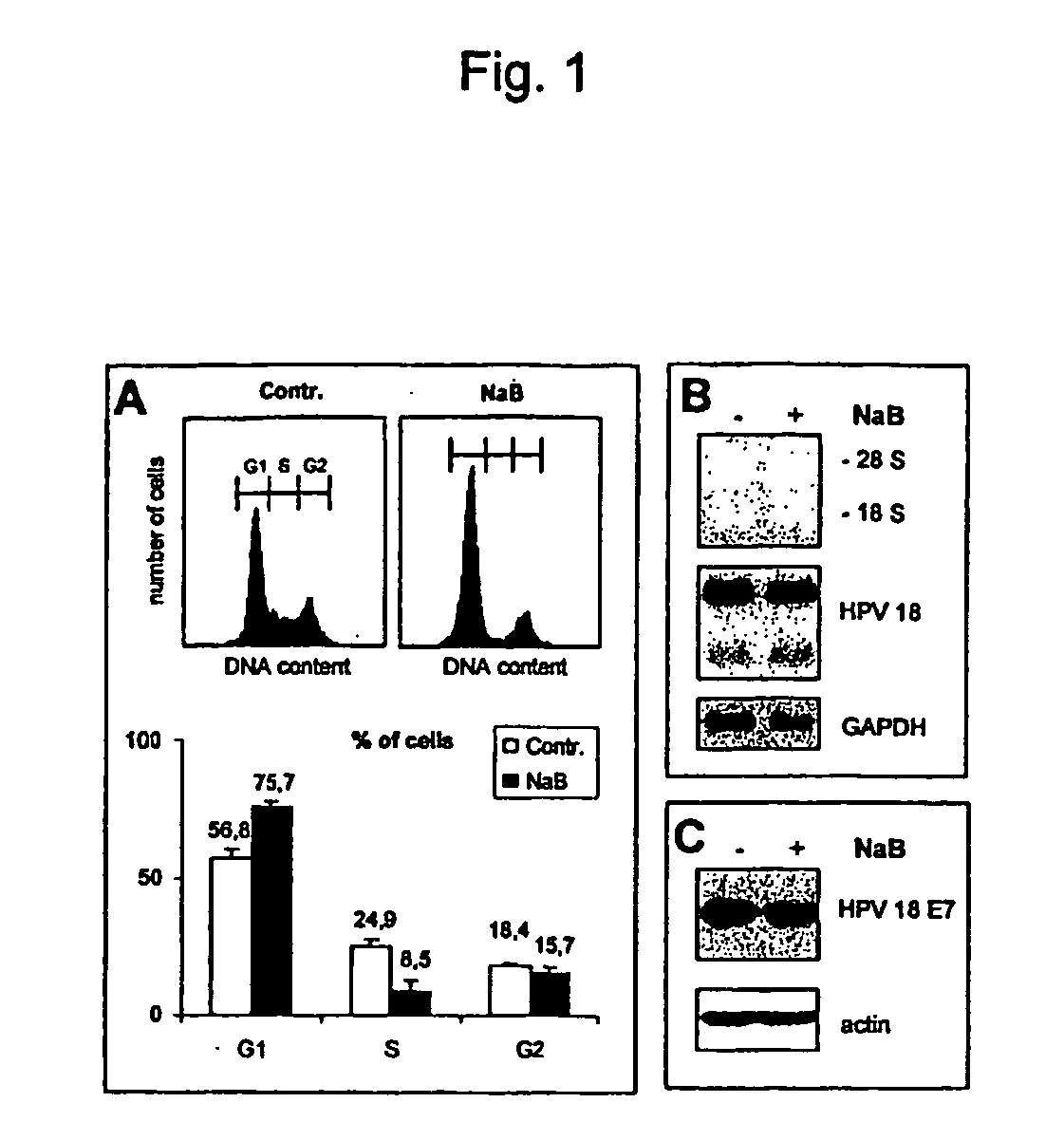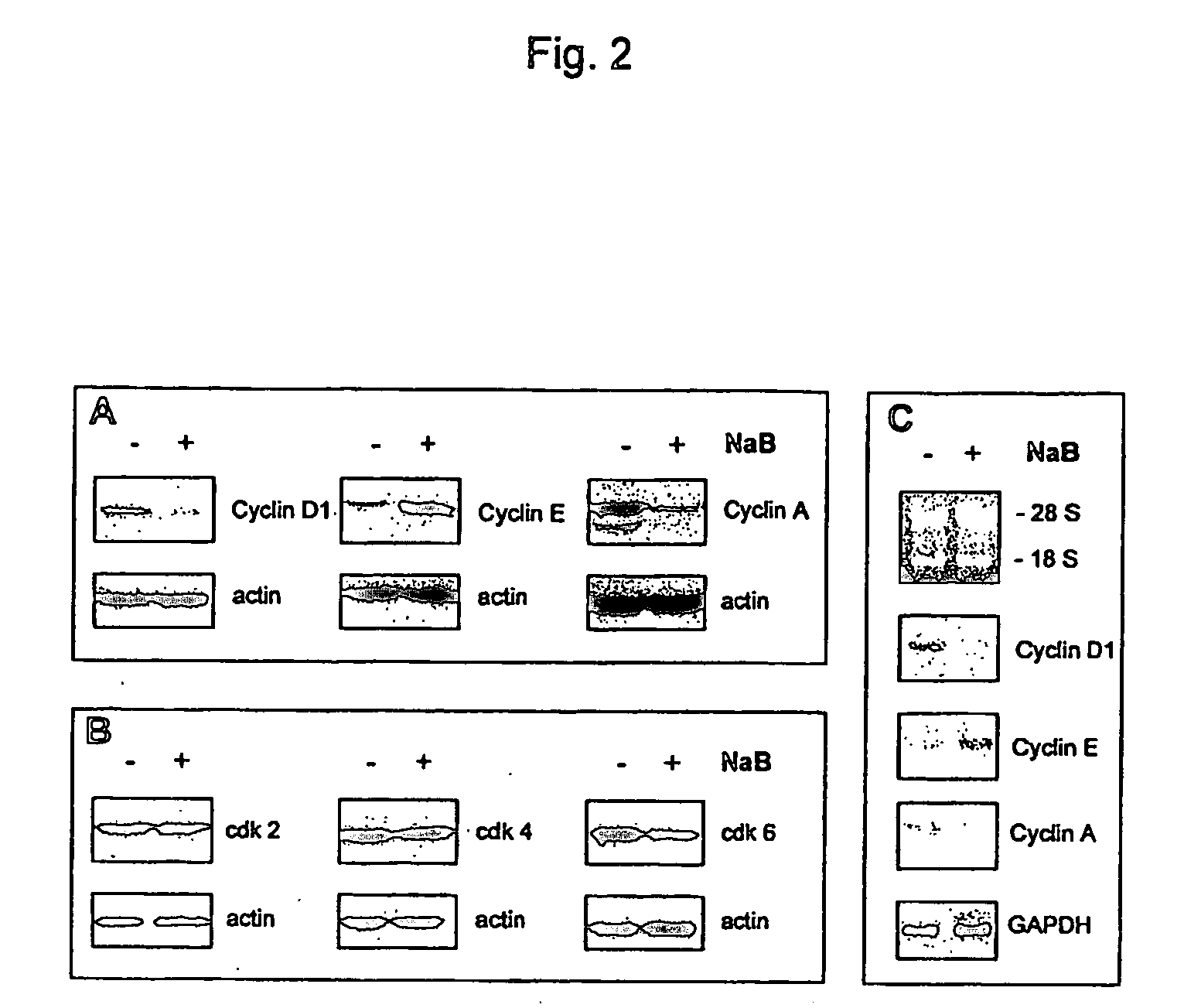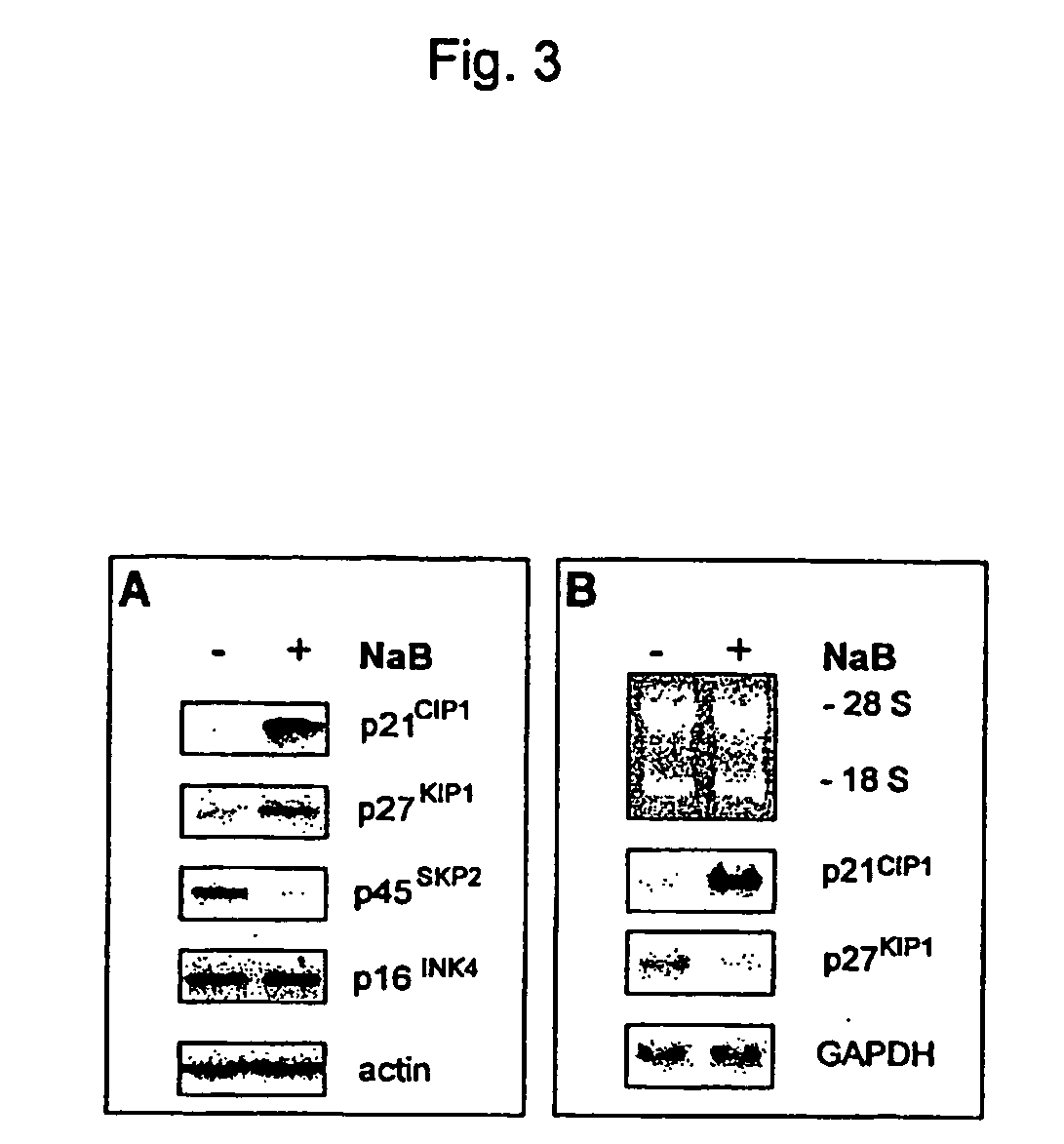Use of an histone deacetylase inhibitor for the treatment of diseases associated with an hpv infection
- Summary
- Abstract
- Description
- Claims
- Application Information
AI Technical Summary
Benefits of technology
Problems solved by technology
Method used
Image
Examples
example 1
A. Example 1
General Methods
[0053] 1. Cell Lines
[0054] HPV18-positive cervical Carcinoma cells (HeLa) were maintained in Dulbecco's modified Eagle's medium (DMEM), supplemented with 10% fetal calf serum (Gibco BRL, Rockville, USA), 1% penicillin and streptomycin (Sigma, Deisenhofen, Deutschland). Primary human keratinocytes, immortalized by E6-, E7- and E6 / E7-open reading frames carrying amphotroptic retroviruses were cultivated in "Keratinocyte Medium Kit" (Sigma). Human foreskin keratinocytes transformed with HPV-16 E6 / E7 either under the control of a human .beta.-actin promoter (,,1321") or under the control of the authentic upstream regulatory region HPV (,,1637") were a kind gift of Dr. R. Schlegel (Georgetown University, Washington, USA) (Munger et al., J. Virol. 63 (1989), 4414-4423; Villa & Schlegel, Virology 181 (1991), 374-377). Cells were grown in 3 parts of keratinocyte-serum free medium (K-SFM, GIBCO, BRL) and 1 part of DMEM containing 10% fetal calf serum (GIBCO, BRL) a...
example 2
B. Example 2
Histone Deacetylase (HDAC) Inhibitors Induce G1 / S Phase Arrest in HIPV18-Positive Cervical Carcinoma Cells Despite Ongoing E6 / E7 Synthesis
[0071] Modulation of histone acetylation is an integral part of a regulatory mechanism, which is involved in the nucleosomal organization of the bulk cellular DNA. Posttranslational neutralisation of the positive charge of lysine residues within the N-terminal domain of core histones relieves histone-DNA interactions, which in turn facilitates the accessibility of transcription factors with their cognate regulatory elements at the DNA level. Alterations of the chromatin architecture is mediated by an interplay between histone acetylases (HAT) and deacetylases (HDAC) counteracting each other in either activating or repressing gene expression. During the last years, a substantial number of HATs have been characterized in yeast and Tetrahymena. In higher eukaryotes, particular adaptor molecules such as p300 / CBP or p / CAF (termed as p300 / CP...
example 3
C. Example 3
HDAC Inhibitors Modulate Cyclins but not Cdk Expression
[0075] Because the precise mechanism underlying the growth inhibitory effect on cervical carcinoma cells has not yet been established, the steady-state levels of regulatory proteins involved in cell cycle control were examined. As shown in FIG. 2, sodium butyrate selectively downregulates cyclin D1 and cyclin A, while the amount of cyclin E was strongly increased (FIG. 2A). Incubation of the same filter with a monoclonal actin antibody confirmed equal loading and protein transfer. Quantitative differences of cyclin expression after sodium butyrate application were presumably not due to altered degradation rates, since there was a good accordance between the levels of protein and the corresponding mRNAs (FIG. 2C). Control hybridization of the identical blot with glyceraldehyde-3-phosphate dehydrogenase (GAPDH) again corroborated the selectivity of this effect. In contrast, neither the cyclin-dependent kinase 2 (cdk2) ...
PUM
 Login to View More
Login to View More Abstract
Description
Claims
Application Information
 Login to View More
Login to View More - R&D
- Intellectual Property
- Life Sciences
- Materials
- Tech Scout
- Unparalleled Data Quality
- Higher Quality Content
- 60% Fewer Hallucinations
Browse by: Latest US Patents, China's latest patents, Technical Efficacy Thesaurus, Application Domain, Technology Topic, Popular Technical Reports.
© 2025 PatSnap. All rights reserved.Legal|Privacy policy|Modern Slavery Act Transparency Statement|Sitemap|About US| Contact US: help@patsnap.com



